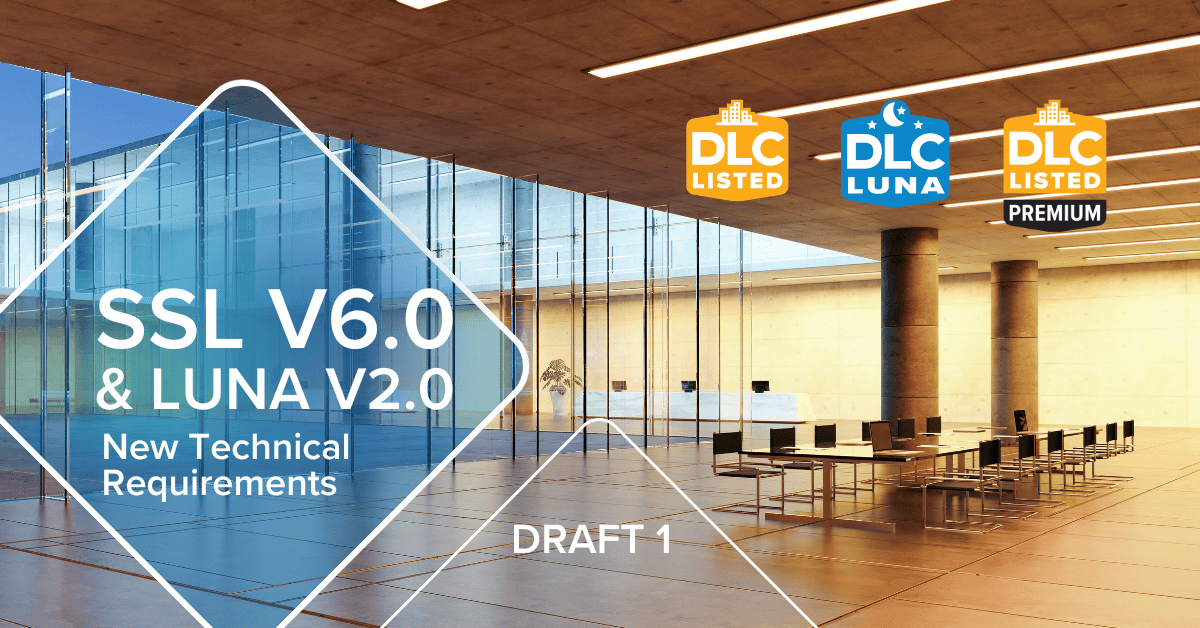
DLC will present an April 15 webinar on draft SSL Version 6.0 and LUNA Version 2.0
MEDFORD, MA – April 7, 2025–The DesignLights Consortium (DLC) today released a draft proposal detailing the first major updates in five years to its Solid State Lighting (SSL) technical requirements, as well as significant proposed revisions to its light pollution-mitigating LUNA program.
“These draft technical requirements include numerous updates and revisions to improve the energy efficiency, controllability, and quality of products on our qualified products lists (QPL) – to help guide the incentive designs offered by most North American utilities and energy efficiency programs. They also give manufacturers more flexibility in product listing and product differentiation through new QPL reporting provisions,” DLC Executive Director and CEO Tina Halfpenny said. “We’re confident these changes will support greater energy savings and promote better lighting for people, mitigate light trespass and sky glow and help to shield wildlife habitats from nighttime illumination.”
The DLC is accepting comments on the draft SSL Version 6.0 and LUNA Version 2.0 technical requirements for LED lighting through May 16. After considering stakeholder comments, the DLC plans to release a second draft on July 21 (with a comment period ending August 29) and final versions of the technical requirements on October 13, 2025.
The DLC has increased the efficacy requirements of products on its SSL QPL an average of 70 percent since 2011. SSL V6.0 continues this trend by proposing an average efficacy increase of approximately 15 percent across all lighting categories, with some as high as 30 percent, depending on product type. At the same time, recognizing that efficacy must accompany quality to support long-term energy savings, SSL V6.0 proposes efficacy allowances for products that meet higher quality of light thresholds in terms of correlated color temperature (CCT), color rendition, and glare.
In addition to improving the average efficacy and quality of light of DLC-listed products, SSL V6.0 includes expanded requirements for dimming and controllability –in recognition of lighting control technology’s largely untapped capacity to significantly boost the energy savings potential of LED installations and retrofits. To promote these savings, SSL V6.0 correlates some aspects of DLC’s SSL and Networked Lighting Controls (NLC) product lists.
SSL V6.0 proposes to organize all listed products into six controls categories based on how luminaires are sold and shipped from manufacturers. This proposed change is meant to support a growing number of programs offering incentives for luminaires that either have integral controls or are “controls-ready” – thereby facilitating greater adoption of energy-saving controlled lighting projects.
Products on the DLC’s LUNA QPL meet all the SSL QPL listing requirements for efficacy, quality, controllability, and reliability, while also reducing light pollution. LUNA V2.0 proposes significant changes, including new pathways for qualifying non-white light (such as amber) luminaires, lamps and retrofit kits that may be suitable for sensitive outdoor environments. In general, the policy notes, “amber and low CCT (i.e., 1800-2000 K) LED products further reduce sky glow and minimize impacts to wildlife compared to white LED luminaires, as long as uplight and over-lighting are minimized.” This is an important lighting option for environmentally sensitive sites.
The DLC is also proposing to add a new “Turtle Lighting” category to the SSL/LUNA QPL, provided luminaires meet specific LUNA criteria and thresholds. The DLC notes that Turtle Lighting luminaires are required in many coastal applications where sea turtle hatchlings are known to nest. de-Amber lighting is considered the least disorienting option for turtles, along with managed distribution, light output and mounting height.
Other additions include proposed qualification and listing of solar-powered outdoor luminaires on the SSL QPL, and provisions designed to give lighting decision makers clearer information about the lifetime of lighting products and their environmental impact. “By encouraging manufacturers to integrate lifecycle data gathering into their processes,” SSL V6.0 states, “the DLC hopes to drive broader sustainability efforts in lighting and highlight opportunities beyond energy efficiency alone.”
For more information about the proposed technical requirements, register for the DLC’s April 15 SSL V6.0 and LUNA V2.0 webinar.
© 2025 DesignLights Consortium. The DesignLights Consortium is a project of Efficiency Forward, Inc., a non-profit 501(c)3 organization. Privacy Policy Terms of Use